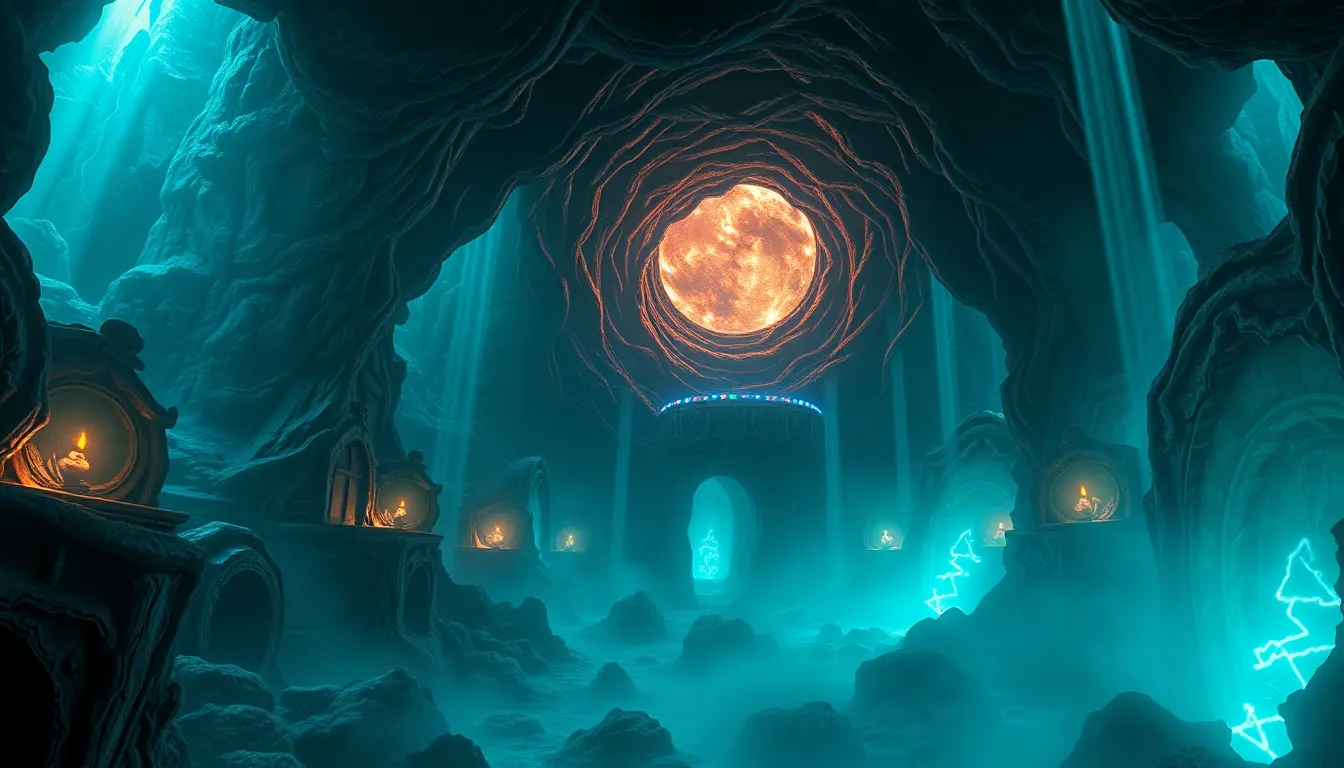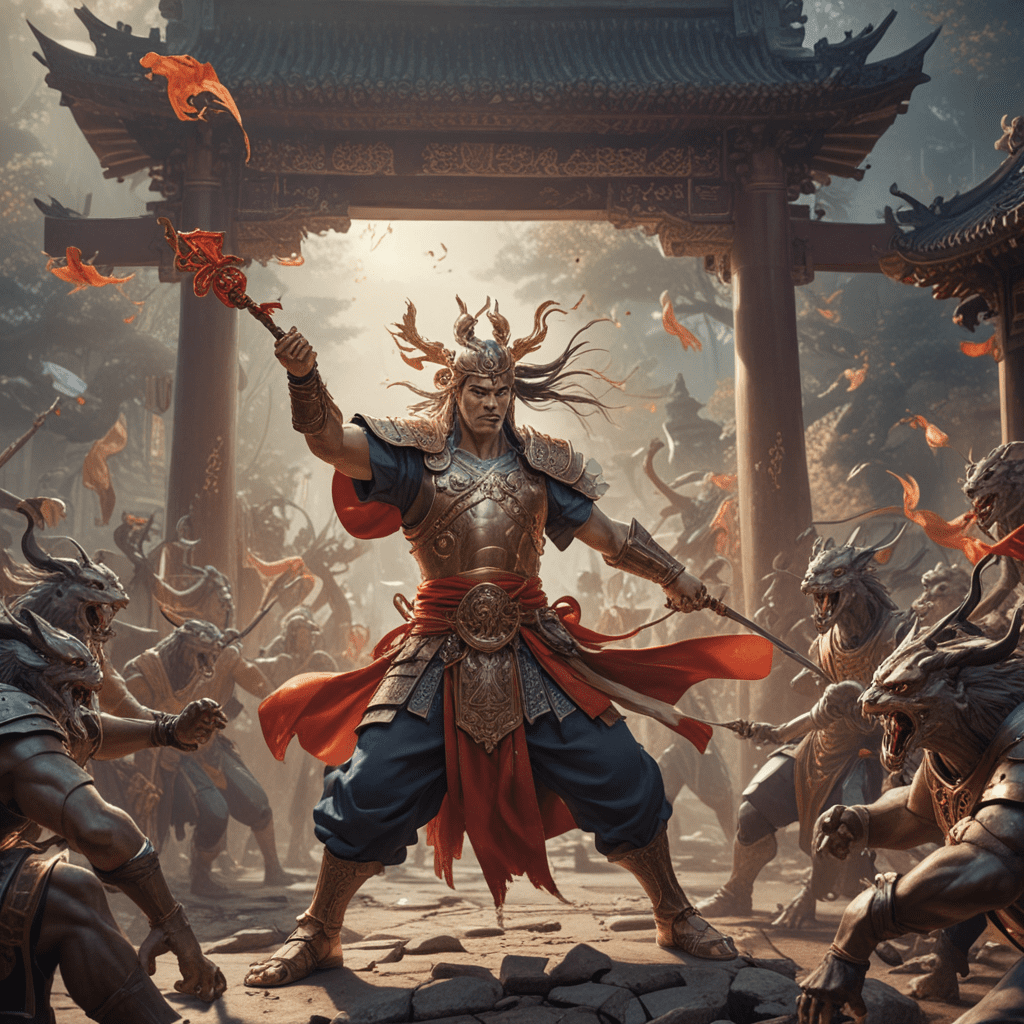The Underworld: A Mythical Exploration of Fear and Wonder
I. Introduction
The Underworld is a concept that has intrigued humanity for millennia, serving as a pivotal element in various mythologies around the globe. It is typically defined as a realm beneath the earth where the souls of the dead reside, but its interpretations vary widely across cultures. From the Greek Hades to the Egyptian Duat, the Underworld represents a complex intersection of life, death, and the afterlife.
This duality of fear and wonder encapsulates the essence of the Underworld. It is a place that elicits dread due to its associations with death and the unknown, yet it also evokes a sense of awe and curiosity about what lies beyond our mortal existence. The purpose of this article is to explore the significance of the Underworld across different cultures, examining its historical context, symbolism, literary representations, psychological interpretations, and its impact on modern society.
II. Historical Context of the Underworld
The concept of the Underworld has evolved significantly from ancient civilizations to modern times. Early myths often depicted the Underworld as a shadowy and inhospitable place, reflecting humanity’s fears about death and the afterlife.
- A. Evolution of Underworld myths from ancient civilizations: Various ancient cultures developed their own Underworld myths, each with distinct characteristics and beliefs about the afterlife.
- B. The role of the Underworld in early religious practices: The Underworld played a crucial role in shaping religious rituals, beliefs about the afterlife, and moral codes.
- C. Comparative analysis of Underworld depictions in different cultures: While the Underworld is a common theme, its portrayal varies significantly, reflecting the values and fears of each society.
III. The Underworld in Ancient Mythologies
Ancient mythologies are rich with stories and beliefs about the Underworld, each providing unique insights into cultural attitudes toward death and the afterlife.
- A. Greek Mythology: Hades and the Realm of the Dead: In Greek mythology, Hades is the god of the Underworld, ruling over a realm that is both feared and respected. The dead are judged and sent to one of three places: Elysium, the Asphodel Meadows, or Tartarus, depending on their mortal deeds.
- B. Egyptian Mythology: Duat and the Journey of the Soul: The ancient Egyptians believed in Duat, a complex afterlife realm where souls would undergo a judgment process, weighing their hearts against the feather of Ma’at, the goddess of truth and justice.
- C. Mesopotamian Beliefs: The Land of No Return: Mesopotamian cultures viewed the Underworld as a bleak place where the dead existed in a shadowy state, devoid of joy or vitality, and referred to it as the Land of No Return.
IV. Symbolism of the Underworld
Beyond being a realm for the dead, the Underworld symbolizes various aspects of the human experience, particularly concerning our subconscious fears and desires.
- A. The Underworld as a representation of the unconscious mind: Psychologically, the Underworld can be seen as a metaphor for the depths of the unconscious, where repressed thoughts and fears reside.
- B. Themes of death, rebirth, and transformation: Many myths involve a journey through the Underworld that leads to personal transformation or rebirth, symbolizing the cyclical nature of life.
- C. The Underworld as a metaphor for personal and societal fears: The various depictions of the Underworld often reflect collective anxieties about mortality, the unknown, and moral decay.
V. The Underworld in Literature and Art
The Underworld has inspired countless literary and artistic works throughout history, serving as a backdrop for exploring profound themes of morality, existence, and the human condition.
- A. Classic literary works featuring the Underworld: Notable examples include Dante’s “Inferno,” which presents a vivid portrayal of Hell, and “The Epic of Gilgamesh,” where the hero confronts the reality of death.
- B. Artistic representations: painting, sculpture, and modern media: Artists have depicted the Underworld in various forms, from Hieronymus Bosch’s “The Garden of Earthly Delights” to contemporary films and video games that explore similar themes.
- C. The influence of Underworld themes on contemporary storytelling: Modern narratives often draw on Underworld motifs to explore deeper existential questions and human emotions.
VI. Psychological Interpretations of the Underworld
From a psychological perspective, the Underworld embodies powerful archetypes and emotions that shape human narratives and experiences.
- A. Jungian archetypes and the Underworld: Carl Jung’s theories suggest that the Underworld represents the shadow self, the hidden aspects of our personality that we often fear to confront.
- B. The role of fear in shaping human experiences and narratives: Fear of death and the unknown influences many human behaviors and cultural narratives, often pushing individuals to seek meaning in life and beyond.
- C. Wonder and curiosity: the allure of the unknown: Despite its fearsome reputation, the Underworld also sparks curiosity about what lies beyond death, prompting exploration and reflection.
VII. The Underworld in Modern Culture
In contemporary society, the Underworld continues to captivate audiences through various forms of media, reflecting ongoing fascinations and fears.
- A. Film and television portrayals of the Underworld: Movies like “What Dreams May Come” and “The Nightmare Before Christmas” showcase imaginative interpretations of the Underworld, blending fear with whimsy.
- B. Video games and interactive experiences related to Underworld themes: Games such as “Hades” and “God of War” delve into Underworld mythology, allowing players to explore these realms interactively.
- C. The impact of the Underworld on popular culture and societal fears: The Underworld serves as a lens through which contemporary fears about death, morality, and the afterlife are examined and expressed.
VIII. The Underworld and Spiritual Beliefs
The Underworld is deeply intertwined with spiritual beliefs across cultures, shaping concepts of the afterlife, morality, and the human experience.
- A. Afterlife beliefs across different religions and how they relate to the Underworld: Various religions, from Christianity to Hinduism, offer unique interpretations of the afterlife, often paralleling the concept of the Underworld.
- B. The concept of judgment and morality in Underworld narratives: Many Underworld myths include themes of judgment, reflecting cultural values regarding morality and the consequences of one’s actions.
- C. Modern spiritual interpretations and the search for meaning: In a contemporary context, individuals often seek personal meanings in Underworld narratives, exploring their implications for life and death.
IX. Personal and Societal Reflections
The Underworld invites both personal and societal reflections on our fears, beliefs, and values. As a shared mythological construct, it serves as a canvas for exploring the complexities of human existence.
Through the exploration of the Underworld, we confront our deepest fears, seek understanding of our mortality, and reflect on the transformative power of life and death. The Underworld, thus, remains a vital symbol in our continuous quest for meaning in an unpredictable world.



